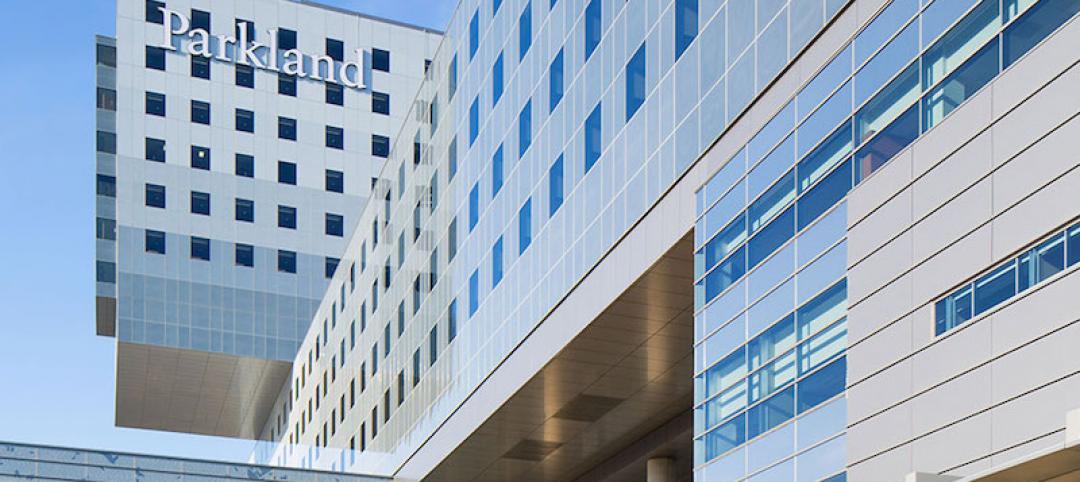Recent global fire events have shed light on the significance of local code compliance in high-rise construction. Although the current focus on metal composite materials (MCM) doesn’t adequately address the entire building envelope ─ which includes many additional components ─ it does provide an opportunity for architects and general contractors to brush up on their role in helping ensure safety.
MCM has been around since the early 70s and has proven to be one of the most versatile architectural cladding products available. Its adaptability, lightweight nature, ease of fabrication and selection of hundreds of colors and finishes help architects and designers achieve nearly any exterior (or interior) aesthetic. But, as with all building products, specifying MCM comes with compliance responsibilities.
There are guidelines to help specifiers understand the codes surrounding when to use traditional polyethylene core (PE) and when a fire-retardant core is required. “A good place to start when researching MCM codes is the 2015 International Building Code,” said James Moses, Technical Service Manager for ALPOLIC®, a leading MCM manufacturer. “The section’s first 10 subsections relate to specifying compliant cladding material for any type of building and height. The last four subsections review compliance for special situations.”

Moses says as a general rule, a fire retardant core must be used when MCM is placed above 40 feet. A PE core is code-compliant for most structures 40 feet high and under (roughly four stories). But once a building goes above 40 feet, in most cases, a fire-retardant core which meets the NFPA 285 standard, a well-established fire-test standard that demonstrates upward resistance to flame spread, must be used.
“The NFPA285 is a test not just for the MCM material, but the entire wall assembly,” said Moses. “This ensures that the entire cladding system has been tested and passed.”
According to Moses, another way to ensure product safety is to look for manufacturers that hold independent, third-party evaluation. The International Code Council Evaluation Service (ICC-ES) offers architects unbiased verification of MCM code compliance. MCM products that are supported with impartial, mainstream code compliance reports are recommended.

Moses also suggests using only MCM products that carry the Warnock Hersey (WH-ETL) Mark. These are products that have been certified-compliant by the building and construction industry’s most rigorous product testing organization. Maintaining the WH-ETL Mark is a continuous process, requiring quarterly inspection audits from Warnock Hersey to ensure ongoing compliance. This is especially important as the industry is starting to see more and more off-shore MCM manufacturers compromising the code by using MCM that does not meet code requirements.
“MCM, like any other building product, is safe when used in compliance with code,” said Moses. “Understanding the code and which products to use will help ensure we continue to build buildings that are as safe as they are beautiful.”
For more information about MCM and fire safety, click here.
Related Stories
Sponsored | Roofing | Mar 21, 2017
Duro-Last provides solution for Kentucky elementary school's leaky roof
The assembly used for this project was Duro-Guard EPS Flute Fill Combo as the base, and then Duro-Guard ISO HD and DensDeck® cover boards.
Products and Materials | Mar 16, 2017
Product roundup: 12 metal roofing and wall products
Tapered Series panels from Dri-Design, Retro-R Panels from MBCI, and Formawall from Centria are just three of the 12 products highlighted in BD+C's February Product Roundup.
Sponsored | Metals | Mar 13, 2017
The art of the metal building system
When Knox College was in need of more space for arts education, they turned to a metal building system solution.
Sponsored | Metals | Dec 5, 2016
Harrison Commons: The beauty of revitalization
The mixed use Harrison Commons project is an early and essential step toward revitalizing a neglected area.
Sponsored | Metals | Dec 1, 2016
The evolution of codes
Today’s codes define more efficient, effective structures, but the engineering of them has become vastly more complex.
Sponsored | Metals | Nov 21, 2016
Ready for earthquakes?
There is a mistaken belief among some people that steel buildings do not do well in earthquakes. The truth is quite the opposite.
Sponsored | Metals | Oct 19, 2016
New village hall boasts contemporary look, LEED Gold status
The building design was inspired by historical elements in the community, and utilizes traditional masonry construction highlighted with a contemporary PAC-CLAD standing seam metal roof.
Sponsored | Cladding and Facade Systems | Sep 15, 2016
Healing has a new home: Parkland Hospital
ALPOLIC® materials contribute to a life-affirming experience.
















